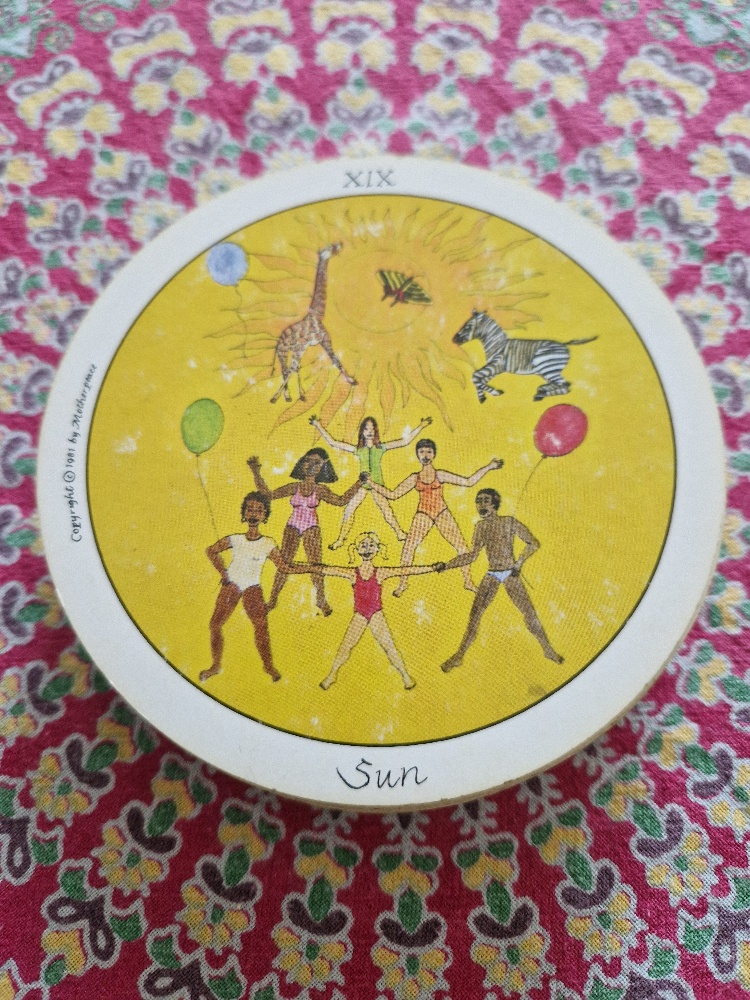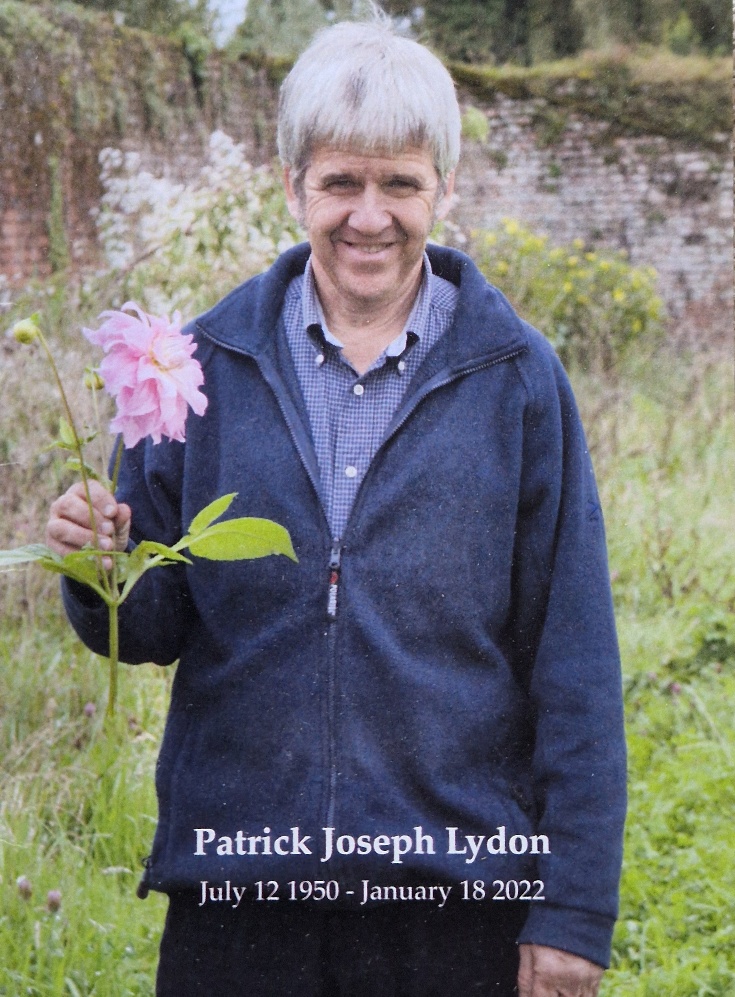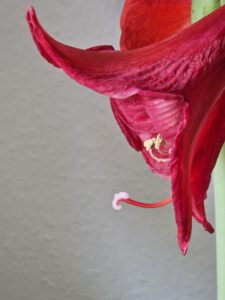The sun represents rebirth – the emergence of the butterfly out of the cocoon. It symbolizes consciousness and the active, awakened understanding of and appreciation for life. Out of the dark room of night, emerging from the birth canal of the kiva or underground chamber, the sun represents the soul’s appearance in all its radiance. Full mental understanding bursts onto the horizon of consciousness, and one sees what is, with joy and celebration.
Vicki Noble, Motherpeace
Is sobriety all that we are to expect of a spiritual awakening? No, sobriety is only a bare beginning; it is only the first gift of the first awakening. If more gifts are to be received, our awakening has to go on. As it does go on, we find that, bit by bit, we can discard the old life – the one that did not work… for a new life that can and does work under any conditions whatever.
Bill Wilson, Co-founder of AA
A miracle is a shift from fear to love.
Marianne Williamson, A Course In Miracles – Commentary
This week in 2003, I had my first day of what has become sustained abstinence from alcohol, weed, and other drugs. This pivotal moment came after having engaged in more or less daily consumption of intoxicants for over 26 years. The anniversary, – what I call my 21st `re-birthday´ – prompted me to look for a way to celebrate in an appropriate fashion.
On passing my bookshelf, the Motherpeace tarot deck and book of commentaries caught my attention. I lit a candle, placed the cards facing down in a circle, and drew card #19 from the Major Arcana, `Sun´. This card has provided inspiration for this week’s essay.
When I embarked on the road of recovery in 2003, it had become clear that my `old life´ was no longer working. Most of us who are drawn to intoxicants as a solution to our nebulous and baffling difficulties in simply enduring life as life is, find that what initially worked very well as a solution (providing immediate ease and comfort, and a feeling of belonging) begins, over time, to lose its potency as a remedy. Not only that, but the erstwhile solution also tends to become the source of even more problems, – (shame and guilt, remorse, self-pity, resentments, etc.) – which pile upon those unresolved ones we were trying to avoid in the first place.
Our experience, as addicts, was that of a pain avoidance strategy gradually failing and, instead, morphing into a pattern of `suicide by instalments´. None of that was clear to me in 2003 when I first admitted that `I was powerless over my addictions, – that my life had become unmanageable.´
In the Twelve Step recovery movement (best known in the form of AA: Alcoholics Anonymous, – and now encompassing a profusion of programmes covering a wide variety of both substance and process addictions) I found my new tribe. It was here that I found the sense of belonging which had eluded me for so long.
What we had in common was the desperation that resulted from living lives that did not work and a deep yearning for a better solution; sufficient hope, courage, and resources which would enable us to shift to the resounding innate `Yes!´ to life which had become eclipsed over years of intoxication. This shift from repudiation to affirmation of life on life’s terms is the shift from Fear to Love.
Of course, there were people in the rooms of AA who simply wished to be relieved from the relentless scourge of chasing the next bottle, line, joint, sexual encounter, or obsession with the ultimate big win at the casino, to name only a few of the manifestations of the compulsive things that we addicts get up to.
`At least, I haven’t had a drink today´ is a statement sometimes heard at our gatherings. While this is understandable at the very beginning of the recovery process, when we are challenged to get to a point of neutrality with respect to abstaining from the `solution´ which we have come to recognise as bankrupt, it is sad to witness this attitude prevail among fellows over years or even decades.
And yet, who knows what fears may be preventing these people from recognising that abstinence is simply the entry ticket into a new way of life, provided we are willing to go beyond putting `the plug in the jug´ and to work through the underlying issues which brought us into exile from our True Selves in the first place?
What is this `spiritual awakening´ to which Bill Wilson refers? It is the process whereby we progress from abstinence (Stage I Recovery) to Emotional Sobriety (Stage II Recovery). Let me sketch it out in the context of two rather recent approaches which have become operative over the past hundred years. These are the Twelve Steps of AA, and the Positive Intelligence (PQ) Mental Fitness modality, recently devised by Shirzad Chamine and his colleagues at the PQ Institute in San Franscisco.
Up front, it is important to point out that there are also many viable ancient approaches which point us in the same direction. Just like their modern counterparts, they appear vulnerable to misinterpretation to the point that they can lead us backwards into the quagmire from which we so desperately wish to be liberated. Through unresolved fear, they can become weaponized to keep us stuck in fear.
A case in point from my own childhood: My Irish Catholic upbringing attempted, with initial success, to instill the `Fear of God´ in me. This is twisted, to say the least. My spiritual awakening has taught me that God is love. Unconditional love. We are not loved if we fulfil certain conditions. We are loved simply because we exist.
`We admitted that we were powerless over alcohol – that our lives had become unmanageable´: this is the first of the Twelve Steps. The programme goes on to state that to overcome this powerlessness, we need access to a power of a higher frequency than that of our willpower or ego if we are to extricate ourselves from the alcoholic’s dilemma.
The dilemma is made up of two parts. Firstly, we have a mind that needs to drink and a body that can’t. Secondly, when we start drinking, we can’t stop, and when we stop, we can’t stay stopped. It’s a real Catch 22.
We are caught up in what medical folks today call an `impulse control disorder´. We cannot think our way out of it, nor can the trap be sprung using willpower alone. As Einstein pointed out, the consciousness that created the problem cannot be consciousness that solves the problem. We need to go higher – in terms of frequency, – ergo `Higher Power´.
The Twelve Step programme goes on to state that this Higher Power resides within each of us, without exception. It does not need to be created but simply discovered. Discovered in the sense of uncovered; it has been covered over by layers of self-sabotaging ideas, emotions, and behaviours which make up the False Self which, under duress of circumstances, we have created. This False Self ensured our survival in the face of childhood adversity.
The steps help us remove the layers of dark materials which block us off from the sunlight of the Spirit. We can then, through a regular practice of prayer and meditation, cultivate a relationship to these Higher Frequencies within. When this relationship is established, the Higher Power operates through us. As the Motherpeace card points out, the sun represents the soul’s appearance in all its radiance. The soul is our True Self.
This is where patterns from childhood may first crucially need be addressed. Those of us who were deeply wounded in early life tend to develop an attitude of radical self-reliance. Nothing and nobody can be trusted, we believe, so we are in this world all on our own.
It takes great courage to relinquish such an old idea and to begin to trust in the process of life. This is what we can learn in the Twelve Steps. Supplementary recourse to professional trauma therapy may be needed to get over this hump. In recent years, thankfully, approaches such as the Twelve Steps have become more and more cognizant of the role of trauma in our addiction and recovery.
Our `old ideas´ or patterns of feeling, thinking, and behaving, evolved as survival mechanisms in early childhood and then became runaway trains. Under ideal circumstances, we would have been the recipients of unconditional love from our adult caregivers and thus would have `known´ that we were worthy of love simply because of our being. Survival mechanisms would not have been necessary.
Few of us experience such ideal circumstances, however. `All of us have had our hearts broken at least once´, a friend of mine is wont to say. So, using the data we scour from our environment, we create a False Self which we believe will probably get us the affection and attention we need, just as much as we need oxygen. The True Self is sacrificed on the altar of expediency.
A prerequisite for deep, sustained recovery is to develop empathy and compassion for ourselves, for having deserted our True Self. As our awakening continues, we can cultivate this empathy for self and extend it to all sentient beings and life circumstances. We cease the destructive practice of beating ourselves up, and others.
In the Positive Intelligence (PQ) Mental Fitness modality, we speak about the old ideas as `Saboteurs´. Unsurprisingly, the universal main Saboteur is the Judge. We judge ourselves, others, and circumstance. This inner critic, and a unique assortment of accomplice Saboteurs we each tend to have (e.g., drawn from the Pleaser, Victim, Hyper-Vigilant, Avoider, Restless, Controller, Hyper-Rational, Stickler, and Hyper-Achiever) must be disarmed if we are to heal and grow. It is not a case of eradicating them, rather becoming aware of their existence, embracing them, and turning down the volume such that they can no longer hijack us.
What are the alternatives to the Saboteurs? The Sage Powers of Empathize, Explore, Innovate, Navigate, and Activate. These operate in the context of the Sage Perspective which states that: `Every circumstance or situation can be turned into a gift or opportunity.´
While the first mental muscle is the Saboteur Interceptor, the second (of three) is the Sage Enhancer. The louder the volume here, the more likely we are to respond to any stimulus in a life-affirming manner of loving-kindness.
The third muscle we train is the Mind Command muscle which enables us to switch from Saboteur to Sage. This is achieved by means of repetitions of simple, body-based, sensorial exercises. The more we exercise this muscle, the stronger it gets. It is the simplicity of the PQ approach which makes it an ideal modality for any transformation process, including recovery from addiction.
Over time, as with physical fitness, we become more mentally fit and capable of putting our mind to work for us and the common good. The keys here are awareness and practice. Any transformation process, if it is to succeed and be sustained, is made up of 20% insights and 80% practice.
Our healing and growth are contingent on the maintenance of our mental fitness. This can be achieved only by regular daily practice. PQ offers this practice in the easy-to-use so-called PQ App.
The Twelve Step programme identifies as both a `programme of action´ and a `we programme´, meaning that collective recovery is seen as the mainspring for individual recovery.
The Motherpeace commentary on the Sun card provides a beautiful description for Emotional Sobriety: Whatever way this central loving self emerges from you, it is time to rejoice. An open heart paves the way for peace and a world connected through joy and harmony. Sun consciousness may be the first step to putting down our weapons and joining hands in a great global circle of healing. Nuclear war and global pollution hurt us all. The pain of one person starving is my pain and your pain. Ask not for whom the sun shines: it shines for us all.








